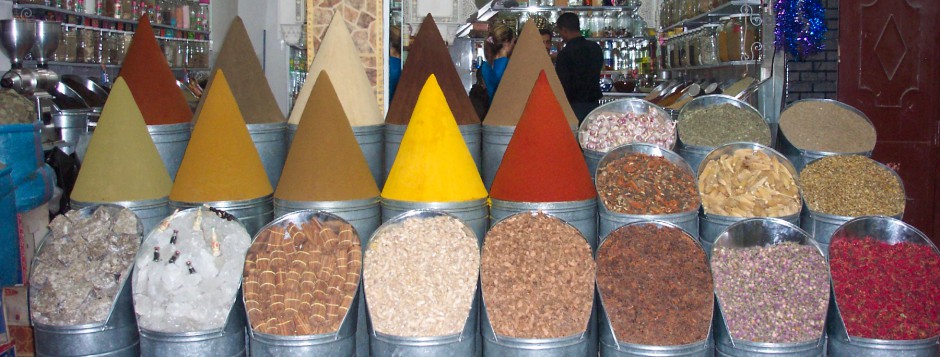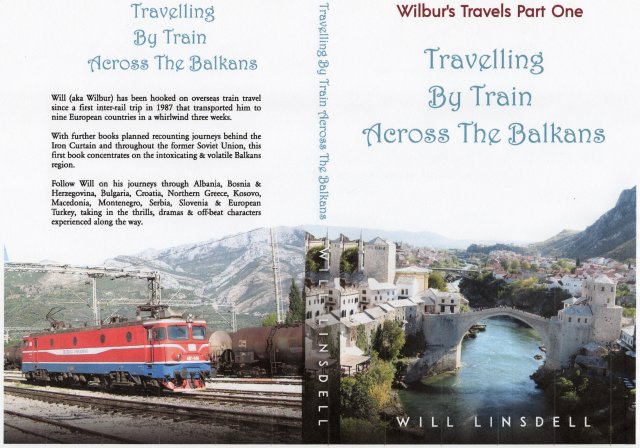The Balkans region is a wonderful place to visit, being so full of history and contrasts.
You can read about my travels there in my book available on Amazon. A brief history of the region appears in the book and is also shown below, giving you a flavour as to why this is such a diverse & fascinating part of Europe.

History Of The Balkans
The Balkans Peninsular has historically been one of the most volatile regions in the world.
The peninsular stretches from Slovenia to Istanbul and takes in all the former Yugoslav countries, Albania, Bulgaria and Northern Greece.
In fact some authorities include parts of Italy, Romania & even Moldova in their definition of the area, only adding to the instability of an enlarged region.
The word ‘Balkan’ comes from Turkish, meaning mountain, and has been applied to the area since the early 19th century.

Empiric Rule
The majority of the Balkan countries formed a large part of the Ottoman Empire over various periods from the mid-14th Century up until the early 20th, with various rebellions in the main put down.
Pretty much during the same period that the rest of the Balkans had been under Ottoman occupation, Croatia & Slovenia had been part of the Habsburg and then the succeeding Austria-Hungary Empires.
In 1822, matters started to change as Greece won its independence from the Ottomans, followed by the Russo-Turkish War (1877-1878) which led to Serbia, Bulgaria & Montenegro, who all fought alongside Russia, gaining independence from the ashes of a crushing Ottoman defeat.
Bosnia & Herzegovina fell under Austria-Hungarian rule around this time as that empire also took advantage of the weakened Ottoman position.

The Balkan Wars
The first Balkan War started in October 1912 and ended in May 1913, seeing the Balkan League states of Bulgaria, Greece and Serbia & Montenegro defeat the Ottoman Empire and seize large swathes of territory as a result.
The war also led to the formation of an independent Albania.
Despite its success, Bulgaria was dissatisfied over the division of the spoils in Macedonia, which provoked the start of the Second Balkan War in June 1913.
Bulgaria attacked its former allies, Serbia and Greece. Serbian and Greek armies repulsed the Bulgarian offensive and counter-attacked, entering Bulgaria.
With Bulgaria also having previously engaged in territorial disputes with Romania, this war also provoked Romanian intervention against Bulgaria.
The Ottomans also took advantage of the situation to regain some lost territories from the previous war.
When Romanian troops approached the capital Sofia, Bulgaria asked for an armistice, resulting in the Treaty of Bucharest, in which Bulgaria had to cede portions of its First Balkan War gains to Serbia, Greece and Romania. In the Treaty of Constantinople, it also lost Edirne to the Ottomans.
The war was over in a little over a month, but the consequences were major.

World War I
The Balkans was also where World War I emanated from due to the fallout from the Balkan Wars leading to Archduke Franz Ferdinand of Austria-Hungary’s assassination in Sarajevo.
The Archduke had been sent by Austria-Hungary as a diplomat to try and quell Bosnian unrest by promoting the idea of the southern Slavs playing a greater role in the empire as a bulwark against Serbian expansionism.
Consequently, after the assassination of the Archduke & his wife by Bosnian-Serb nationalist Gavrilo Princip, various treaties were invoked to set the wheels in motion for the Great War.

The war’s prime protagonists at its outset were Germany, Austria-Hungary, the Ottoman Empire & Bulgaria who fought against the UK, France & Russia.
Many other nations were sucked into the fighting, with the Ottomans taking the opportunity to ethnically cleanse their lands with genocides most notably against Armenians & Greeks.
These events, together with the Greece seizing territory in East Thrace and Western Anatolia at the end of WWI, led to the Greco-Turkish War (1919-22), which ultimately ended with the Greek forces being repelled.
It resulted with Greece giving up those territories previously gained, plus there being a population exchange of around 1.6 million people between Turkey & Greece.
This particular war ended with the Great Fire of Smyrna (modern-day Izmir), which completely destroyed the Greek & Armenian quarters of the city, whilst leaving the Muslim & Jewish quarters undamaged.
The fire raged for nine-days, creating tens of thousands of Greek & Armenian refugees, many of whom were raped and murdered or forcibly deported to Anatolia, where many died in extremely harsh conditions.
There are differing accounts of how the fire started and facts regarding the atrocities committed by the Turks are disputed. Whatever the truth may be, this was a human catastrophe of seismic proportions.
Following the end of WWI, the new Balkan order was also created with the formation of Yugoslavia under Peter I of Serbia (initially the nation was called The Kingdom of Serbs, Croats and Slovenes, but in 1929 King Alexander I changed the name of the state to Yugoslavia, meaning land of the southern Slavs).
After many territorial losses and much in-fighting, the Ottoman Empire formally collapsed in 1922 with the subsequent declaration of the secular Turkish Republic led by Ataturk.
The formal abolition of the Ottoman Sultanate was performed by Grand National Assembly of Turkey on 1 November 1922. The Sultan was declared persona non grata from the lands that the Ottoman Dynasty ruled since 1299.
The Sultan’s expulsion from Turkey was an act that many Muslims still take as a huge insult to the Islamic Faith and is something that jihadis have been trying to avenge ever since.
World War II
World War II brought fresh turmoil to the region. As German troops invaded Yugoslavia in 1941, they were welcomed by Croatian fascists. Hitler rewarded the Croats with a nominally independent puppet state, which also incorporated Bosnia.
In the course of a series of overlapping civil wars, widespread atrocities were committed by all sides. In Croatia, Serbs, Jews, gypsies and anti-fascist Croats were killed in concentration camps.
Serbia came under the control of German troops while the Italians occupied Montenegro.
Rival partisans under Josip Broz Tito, a communist, and Dragoljub Mihailovic, a Serb nationalist, fought the Germans, when not fighting each other. Kosovo was occupied by Albanian and Italian troops, whilst the Bulgarians invaded Macedonia.
In 1945 following the end of WWII, Socialist Yugoslavia was declared by Marshall Tito. The communists were able to deal with national aspirations by creating a federation of six nominally equal republics in Croatia, Montenegro, Serbia, Slovenia, Bosnia-Herzegovina, and Macedonia. The Federal Socialist Republic of Yugoslavia had been born.
In Serbia the two provinces of Kosovo and Vojvodina were given autonomous status, whilst Bulgaria became a communist state at the same time.

In Yugoslavia, national and ethnic tensions grew over the ensuing decades and when Tito died in 1980 many expected the federation to break up. However, the Slavic nation was to survive uneasily for over a further decade.
It was only a matter of time though for those fundamental differences to boil over into full-scale conflict.
The War In Yugoslavia
The ‘90s Yugoslav War with its brutality and deep racial hatred was extensively played out on our TV screens in the West. As a result, wonderful cities such as Sarajevo, Dubrovnik, Mostar, Srebrenica & Pristina became synonymous with terror and suffering.
I remember the war being really confusing, with it difficult to make out who was fighting who at any particular stage.
Slovenia and then Croatia were the first to break away from Yugoslavia in 1991, but only at the cost of bloody Croatian conflict with Serbia.
The war in Croatia led to hundreds of thousands of refugees and re-awakened memories of the brutality of the 1940s. By late 1992, a further conflict had broken out in Bosnia, which had also declared independence.
The Serbs who lived there were determined to remain within Yugoslavia and to help build a greater Serbia. They received strong backing from extremist groups in Belgrade.
Bosnian Muslims were driven from their homes in carefully planned operations, many being raped before being brutally murdered and buried in mass graves.
By 1993 the Bosnian Muslim government was besieged in the capital Sarajevo, surrounded by Bosnian Serb forces who controlled around 70% of Bosnia. The deadly siege was to last an incredible 1,425 days.
In Central Bosnia, the mainly Muslim army was fighting a separate war against Bosnian Croats who wished to be part of a greater Croatia. The presence of UN peacekeepers to contain the situation proved totally ineffective.

Long overdue American pressure to end the war eventually led to the Dayton agreement of November 1995, which created two self-governing entities within Bosnia – the Bosnian Serb Republic and the Muslim (Bosnjak)-Croat Federation.
A NATO led peacekeeping force was charged with implementing the military aspects of the peace agreement, primarily overseeing the separation of forces.
Croatia, meanwhile, took back most of the territory earlier captured by Serbs when it waged lightning military campaigns in 1995, which also resulted in the mass exodus of around 200,000 Serbs from Croatia.
In 1998, nine years after the abolition of Kosovo’s autonomy, the Kosovo Liberation Army – supported by the majority ethnic Albanians, came out in open rebellion against Serbian rule.
The international community, while supporting greater autonomy, opposed the Kosovar Albanians’ demand for independence. However, international pressure grew on Serbian strongman Slobodan Milosevic to bring an end to the escalating violence in the province.
Threats of military action by the West over the crisis culminated in the launching of NATO air strikes against Yugoslavia in March 1999, the first attack on a sovereign European country in the NATO alliance’s history.
This ultimately brought about the end of the war, with only Serbia (still officially including Kosovo) and Montenegro remaining allied as the remnants of the Yugoslav Republic.
This finally ended with Montenegrin independence in 2006, followed by Kosovo in 2008.




It is important to know your history before travelling to the Balkans. I have run into trouble a couple of times or more for sure!
LikeLike